Blood Pressure and AFib: Understanding the Link and Reducing Stroke Risk
How does high blood pressure increase the risk of atrial fibrillation. What is the connection between blood pressure, AFib, and stroke risk. How can you reduce your risk of stroke if you have hypertension or AFib.
The Relationship Between Blood Pressure and Atrial Fibrillation
High blood pressure and atrial fibrillation (AFib) are two significant risk factors for stroke. Understanding the link between these conditions is crucial for managing cardiovascular health and preventing severe complications.
How Does High Blood Pressure Lead to AFib?
High blood pressure, or hypertension, can contribute to the development of atrial fibrillation in several ways:
- Arterial damage: Prolonged high blood pressure causes wear and tear on the arterial walls, potentially disrupting the heart’s electrical system.
- Left atrial enlargement: Hypertension can lead to an enlarged left atrium, creating an environment conducive to irregular heart rhythms.
- Structural changes: Over time, high blood pressure may cause structural changes in the heart, increasing the likelihood of AFib.
Can high blood pressure directly cause AFib? While hypertension doesn’t guarantee the development of AFib, it significantly increases the risk. Managing blood pressure is crucial in preventing this arrhythmia.

The Impact of AFib on Stroke Risk
Atrial fibrillation is a major contributor to stroke risk, accounting for approximately 15% of all strokes in the United States. This irregular heart rhythm can lead to blood pooling in the heart, potentially forming clots that may travel to the brain.
Why Does AFib Increase Stroke Risk?
AFib increases stroke risk through the following mechanisms:
- Blood stasis: The irregular heartbeat allows blood to pool in the heart chambers.
- Clot formation: Stagnant blood is more likely to form clots.
- Embolism: These clots can travel to the brain, causing an ischemic stroke.
How much does AFib increase stroke risk? Individuals with AFib have a five times higher risk of stroke compared to those without the condition.
The Compounded Risk: High Blood Pressure and AFib
When high blood pressure and atrial fibrillation coexist, the risk of stroke increases dramatically. This combination creates a perfect storm for cardiovascular complications.
The Synergistic Effect on Stroke Risk
The presence of both conditions amplifies stroke risk through:
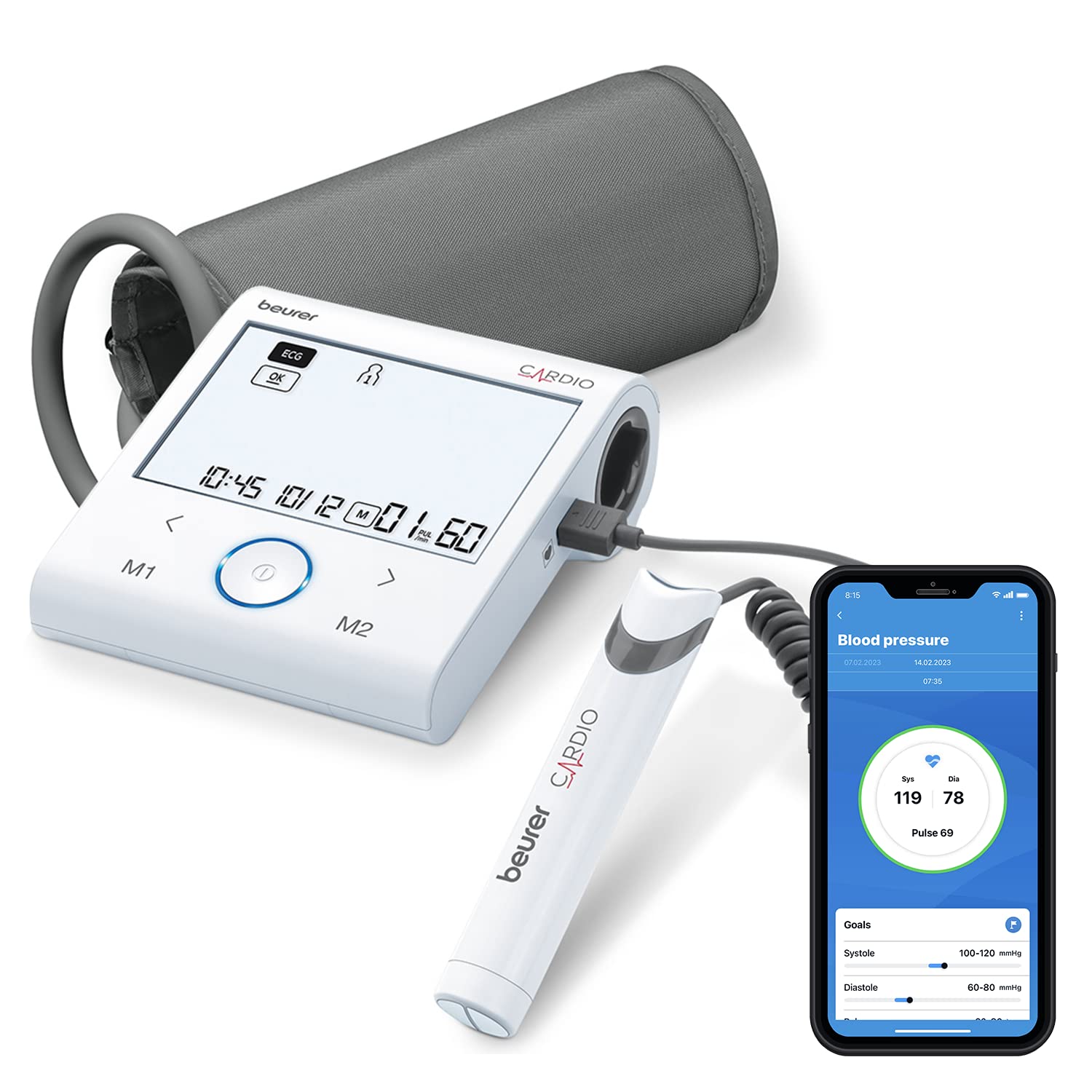
- Increased arterial damage
- Higher likelihood of clot formation
- Compromised blood flow to the brain
Is the risk of stroke additive or multiplicative with hypertension and AFib? The risk is often multiplicative, meaning the combined effect is greater than the sum of individual risks.
Recognizing the Signs and Symptoms
Early detection of high blood pressure and atrial fibrillation is crucial for preventing stroke. Recognizing the signs and symptoms of these conditions can lead to prompt treatment and risk reduction.
High Blood Pressure Symptoms
Hypertension is often called the “silent killer” because it typically doesn’t cause noticeable symptoms. However, some people may experience:
- Headaches
- Shortness of breath
- Nosebleeds
- Dizziness
Regular blood pressure checks are essential for early detection and management.
Atrial Fibrillation Symptoms
AFib symptoms can vary, but may include:
- Heart palpitations
- Fatigue
- Shortness of breath
- Chest pain or discomfort
- Dizziness or lightheadedness
Do all individuals with AFib experience symptoms? Not necessarily. Some people may have asymptomatic or “silent” AFib, making regular check-ups crucial.

Preventing and Managing High Blood Pressure
Preventing and managing high blood pressure is a key strategy in reducing the risk of both AFib and stroke. Adopting heart-healthy lifestyle choices can make a significant difference.
Lifestyle Modifications for Blood Pressure Control
Effective strategies for managing blood pressure include:
- Maintaining a healthy weight
- Regular physical activity
- Limiting alcohol consumption
- Reducing sodium intake
- Managing stress
- Quitting smoking
How much can lifestyle changes impact blood pressure? In many cases, these modifications can lower blood pressure by 5-10 mmHg or more.
Medication Options for Hypertension
When lifestyle changes aren’t enough, various medications can help control blood pressure:
- ACE inhibitors
- Angiotensin II receptor blockers (ARBs)
- Calcium channel blockers
- Diuretics
- Beta-blockers
Working closely with a healthcare provider to find the right medication or combination is crucial for effective management.
Managing Atrial Fibrillation
Proper management of atrial fibrillation is essential for reducing stroke risk. Treatment approaches may include medication, lifestyle changes, and in some cases, medical procedures.
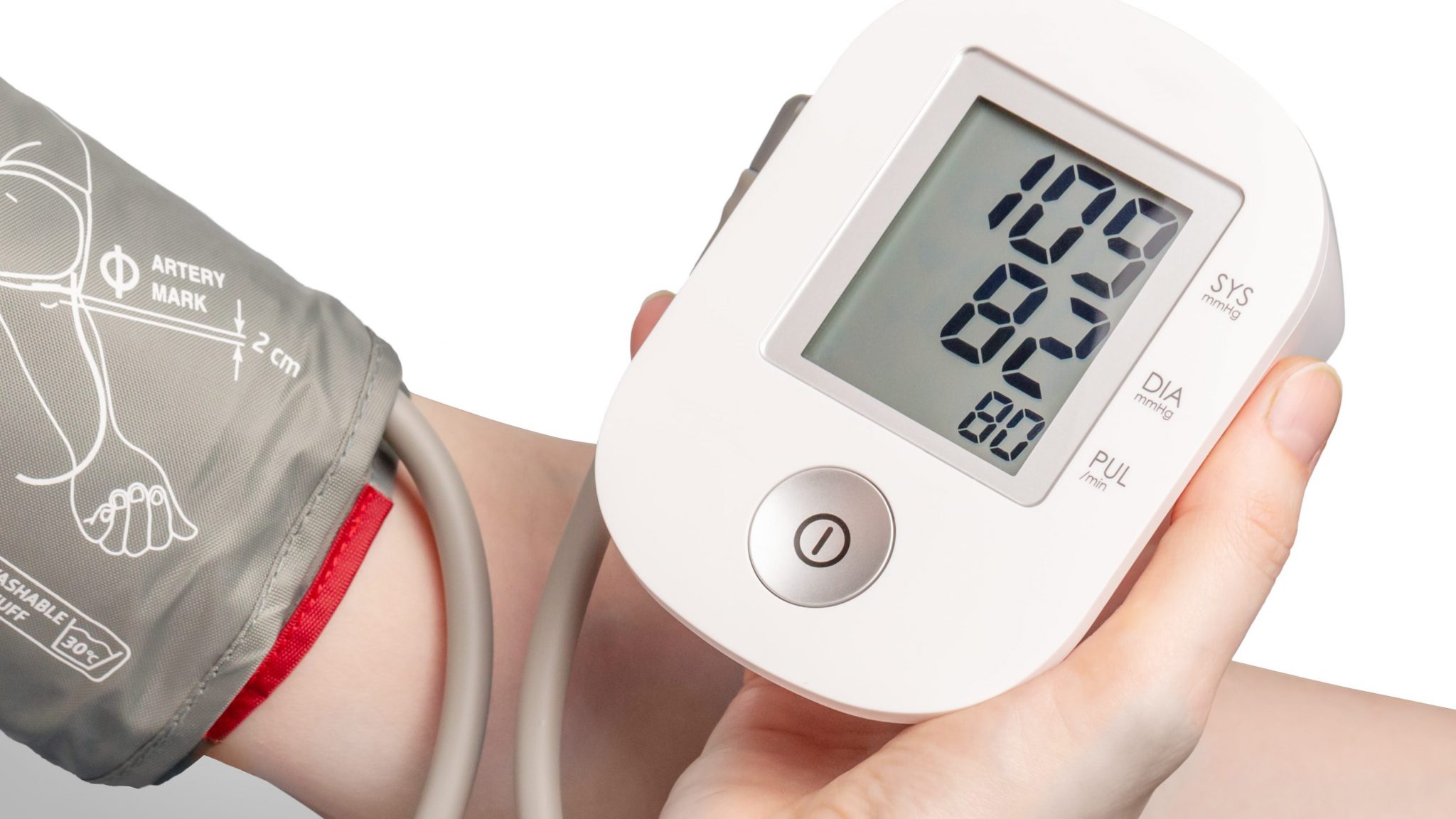
Medication Strategies for AFib
Common medications used in AFib management include:
- Anticoagulants (blood thinners)
- Antiarrhythmic drugs
- Rate control medications
Why are blood thinners often prescribed for AFib patients? Blood thinners reduce the risk of clot formation, which is a major concern in AFib-related stroke prevention.
Non-Pharmacological Approaches
In addition to medication, other treatment options may include:
- Cardioversion
- Catheter ablation
- Lifestyle modifications
- Pacemaker implantation
The choice of treatment depends on individual factors and should be discussed with a healthcare provider.
Comprehensive Stroke Prevention Strategies
Preventing stroke requires a multifaceted approach, especially for individuals with high blood pressure and atrial fibrillation. Implementing a comprehensive strategy can significantly reduce risk.
Lifestyle Modifications for Stroke Prevention
Key lifestyle changes that can help prevent stroke include:
- Adopting a heart-healthy diet
- Engaging in regular physical activity
- Maintaining a healthy weight
- Limiting alcohol consumption
- Quitting smoking
- Managing stress
How effective are lifestyle changes in preventing stroke? Studies show that adopting a healthy lifestyle can reduce stroke risk by up to 80%.

Regular Monitoring and Check-ups
Consistent monitoring of blood pressure and heart rhythm is crucial for early detection and management of potential issues. Regular check-ups should include:
- Blood pressure measurements
- ECG screenings
- Cholesterol level checks
- Discussion of symptoms and concerns with healthcare providers
How often should individuals with hypertension or AFib have check-ups? The frequency may vary, but typically ranges from every 3 to 6 months, depending on individual risk factors and condition stability.
The Role of Technology in Managing Blood Pressure and AFib
Advancements in technology have revolutionized the way individuals can monitor and manage their cardiovascular health. These tools can be particularly beneficial for those with high blood pressure and atrial fibrillation.
Home Blood Pressure Monitoring
Home blood pressure monitors allow for regular tracking of blood pressure levels. Benefits include:
- Early detection of hypertension
- Monitoring the effectiveness of treatment
- Providing valuable data for healthcare providers
How accurate are home blood pressure monitors? While not as precise as clinical measurements, many home devices provide reliable readings when used correctly.
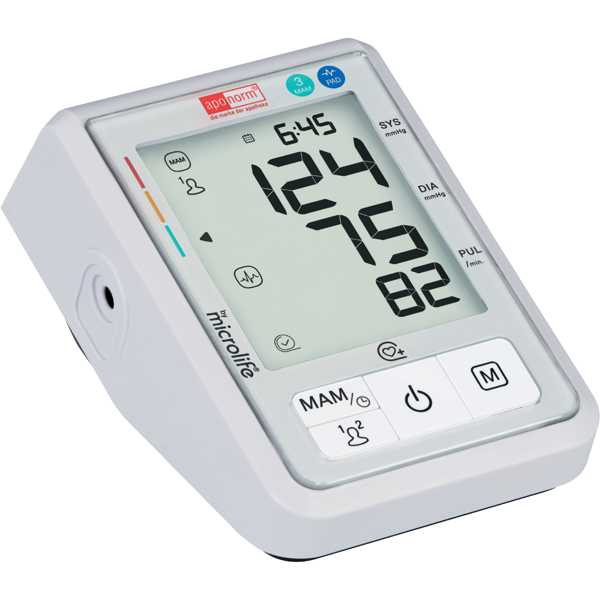
Wearable ECG Devices
Wearable ECG devices can help detect and monitor atrial fibrillation. These devices offer:
- Continuous heart rhythm monitoring
- Early detection of AFib episodes
- Data sharing capabilities with healthcare providers
Can wearable devices replace traditional medical monitoring? While these devices are valuable tools, they should complement, not replace, professional medical care and monitoring.
The Importance of Patient Education and Support
Educating patients about high blood pressure, atrial fibrillation, and stroke risk is crucial for effective management and prevention. Informed patients are better equipped to make healthy decisions and adhere to treatment plans.
Understanding Risk Factors
Key risk factors for high blood pressure, AFib, and stroke include:
- Age
- Family history
- Obesity
- Sedentary lifestyle
- Excessive alcohol consumption
- Smoking
- Underlying health conditions
Why is understanding risk factors important? Awareness of personal risk factors can motivate individuals to take proactive steps in prevention and management.

Support Groups and Resources
Support groups and educational resources can provide valuable assistance for individuals managing high blood pressure and AFib. Benefits include:
- Emotional support
- Shared experiences and coping strategies
- Access to up-to-date information
- Motivation for lifestyle changes
Where can patients find reliable support groups and resources? Many hospitals, community centers, and online platforms offer support groups and educational materials for cardiovascular health.
The Future of Blood Pressure and AFib Management
As medical research advances, new approaches to managing high blood pressure and atrial fibrillation are emerging. These developments hold promise for improved patient outcomes and reduced stroke risk.
Emerging Treatment Options
Innovative treatments under investigation include:
- Novel anticoagulants with improved safety profiles
- Advanced ablation techniques for AFib
- Gene therapy approaches
- Personalized medicine strategies
How might these advancements impact patient care? These innovations could lead to more effective, tailored treatments with fewer side effects and improved quality of life for patients.
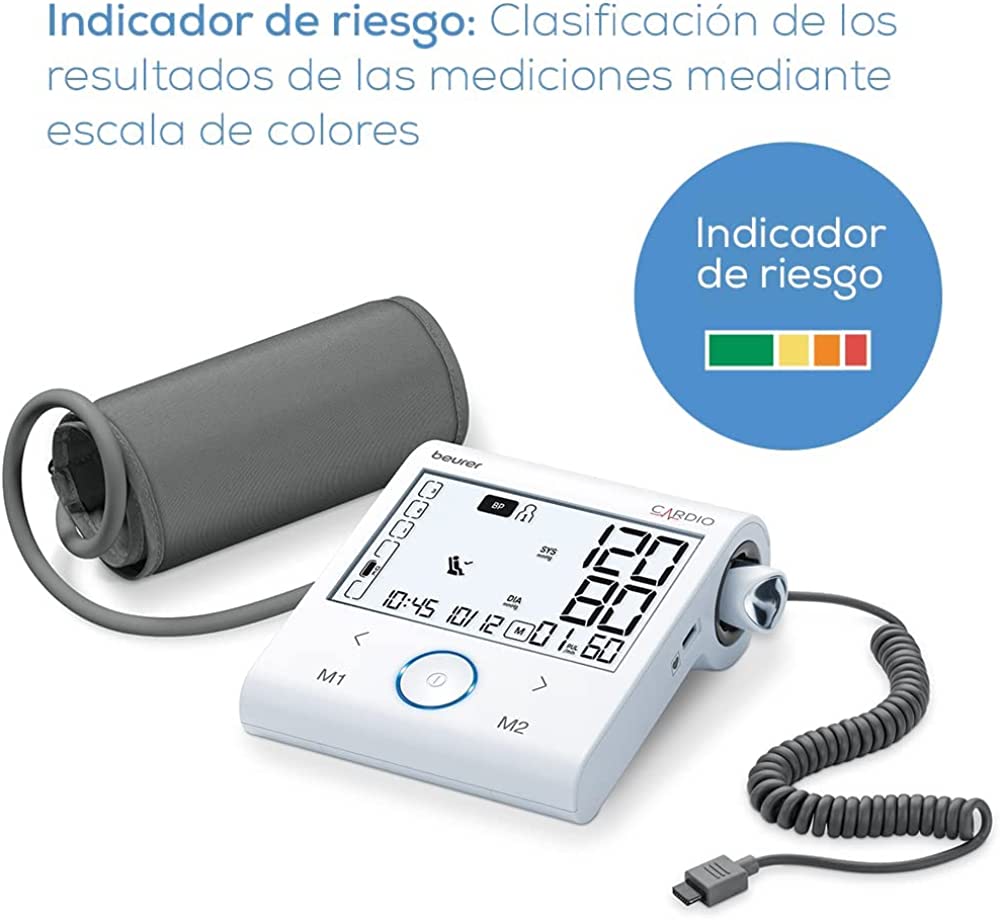
The Role of Artificial Intelligence
Artificial intelligence (AI) is poised to revolutionize cardiovascular care through:
- Predictive analytics for risk assessment
- AI-assisted diagnosis and treatment planning
- Personalized medication management
- Remote monitoring and early intervention
What potential does AI hold for improving patient outcomes? AI could enhance early detection, treatment optimization, and long-term management of high blood pressure and AFib, potentially reducing stroke risk significantly.
In conclusion, understanding the intricate relationship between blood pressure, atrial fibrillation, and stroke risk is crucial for effective prevention and management. By implementing comprehensive strategies that include lifestyle modifications, medication adherence, regular monitoring, and leveraging technological advancements, individuals can significantly reduce their risk of stroke and improve overall cardiovascular health. As research continues to advance, the future holds promise for even more effective and personalized approaches to managing these conditions and mitigating stroke risk.

High Blood Pressure, Atrial Fibrillation and Your Risk of Stroke
What do blood pressure and the rhythm of your heart have to do with stroke risk? Plenty.
Consider this: About three out of four people who have a stroke for the first time have high blood pressure. And an irregular atrial heart rhythm — a condition called atrial fibrillation — accounts for 15% of all strokes in the United States.
Stroke is a leading cause of death in America. It happens when a blood vessel that supplies blood to the brain is blocked or bursts. Nearly 800,000 Americans have a stroke each year.
High blood pressure is the chief culprit. Atrial fibrillation, also called AFib or AF, isn’t far behind. Yet there’s good news: You can easily do something about both. Your best defense is to avoid these conditions through a heart-healthy lifestyle. But even if you’re living with AFib or high blood pressure, there’s still a lot you can do to lower your risk of stroke.
View an animation of AFib.
The stroke connection
The brain needs blood and oxygen. When this crucial nourishment can’t reach the brain — either because of a clogged artery or a burst vessel — brain cells start to die.
For people with high blood pressure, the force of blood pushing against the arteries as the heart pumps blood is too high. That causes gradual damage to the arteries, including those to the brain. A weakened blood vessel may rupture in or near the brain, or diseased arteries may become blocked by a clot or plaque buildup.
Then there’s AFib. That’s when stroke risk increases because a rapid heartbeat allows blood to pool in the heart, which can cause clots to form and travel to the brain.
High blood pressure is a risk factor for AFib. If you don’t control your high blood pressure as you age, you may also get AFib. That would increase your risk of stroke even more.
How to reduce stroke risk
Stroke is not inevitable if you have high blood pressure or AFib.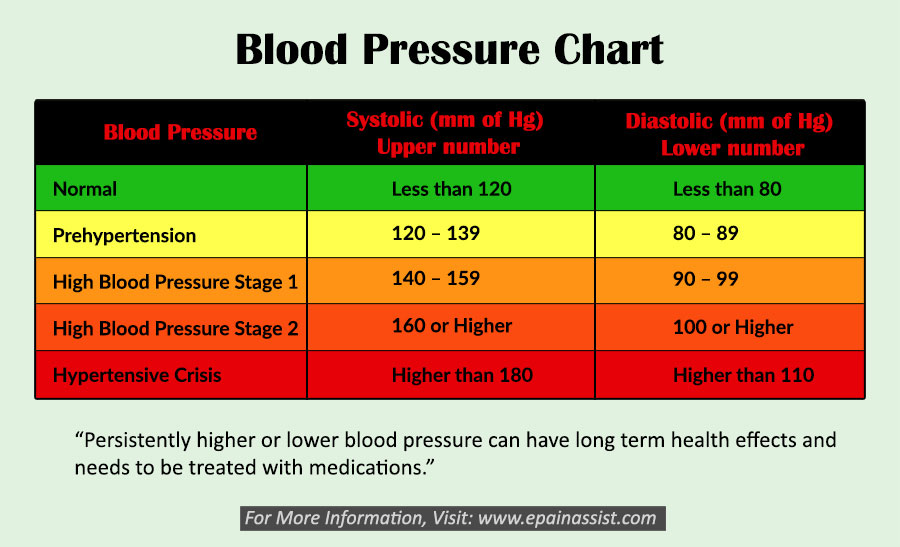 Preventing or controlling these conditions can greatly lower your chances of having a stroke. Here’s how:
Preventing or controlling these conditions can greatly lower your chances of having a stroke. Here’s how:
- Don’t smoke.
- Get regular physical activity.
- Maintain a healthy weight.
- Limit alcohol to no more than two drinks a day for men or one drink a day for women.
- Eat a healthy diet that is high in fruits, vegetables, and whole grains; includes low-fat dairy products and limits salt, saturated fats, trans fats and cholesterol.
- Monitor your blood pressure and work to keep it at your goal.
- Take your medication as prescribed if you have high blood pressure or AFib.
Connect with People Who Care
If you or someone you love is affected by atrial fibrillation, explore our online community for people living with AFib.
Visit My AFib Experience today
Written by American Heart Association editorial staff and reviewed by science and medicine advisors. See our editorial policies and staff.
See our editorial policies and staff.
Last Reviewed: Mar 24, 2023
Related Articles
Understanding Blood Pressure Readings
About Stroke
AFib and Hypertension | Kardia
High blood pressure, or hypertension, is a leading cause of AFib in adults. Discover why it happens and how to manage your symptoms to improve your long-term health.
How high blood pressure can lead to AFib
Atrial fibrillation is an electrical problem, and it often exists independently of other heart conditions. But while it may not lead to a heart attack or other critical consequences to the heart muscle, there is a link between AFib and more general cardiovascular concerns, particularly high blood pressure.
High blood pressure, or hypertension, is a leading cause of AFib in adults. Both disorders tend to manifest after middle age, and both can be traced to poor habits or unhealthy lifestyles. Simply having high blood pressure won’t guarantee that you’ll develop AFib, but the link is too strong to ignore: hypertension can damage your tissues and heart muscle in ways that can eventually disrupt your heart’s electrical impulse.
Another common element of hypertension and AFib is a significantly higher risk of stroke: about 75% of people who have a stroke also have high blood pressure. In turn, it’s vital that you adopt a targeted treatment plan and positive lifestyle changes as early as possible to avoid serious complications.
How does high blood pressure cause AFib?
When your blood is pushing hard against your arterial walls for a long period of time, your risk of developing AFib climbs considerably. There are a few reasons to explain this link:
Arterial wear and tear. Your arteries are flexible, and they can handle quite a lot. But when they’re under too much pressure, the force will weaken the artery walls, then narrow them, and ultimately impede normal blood flow. When blood can’t flow as it should, the heart muscle will function less efficiently. In fact, low blood flow (ischemia) that’s traced to damaged arteries can interfere with your heart’s electrical signals.
Your arteries are flexible, and they can handle quite a lot. But when they’re under too much pressure, the force will weaken the artery walls, then narrow them, and ultimately impede normal blood flow. When blood can’t flow as it should, the heart muscle will function less efficiently. In fact, low blood flow (ischemia) that’s traced to damaged arteries can interfere with your heart’s electrical signals.
Structural changes. High blood pressure forces your heart to pump harder and harder. When your heart is pushed to the limit for too long, the muscle doesn’t get stronger – it gets thicker and stiffer. Electrical signals can’t move as easily through a less flexible, enlarged heart muscle, and that could lead to AFib.
The longer you go with high blood pressure, the more likely you are to develop AFib. Failing to keep your blood pressure in a healthy range (120/80 mm Hg is ideal), especially after middle age, may be the single most counterproductive measure to controlling or preventing a heart rhythm disorder.
Managing your symptoms for long-term health
You certainly want to keep your heart muscle healthy, but you need to think about your whole-body health, too. Reducing your elevated stroke risk should be a top priority when you live with AFib and high blood pressure. After all, hypertension doubles your stroke risk and AFib raises as much as five times higher than average.
Fortunately, you have tools to help you manage both conditions. Once you know your blood pressure numbers and the nature of your AFib, you can compile an action plan with the help of your doctor’s advice and treatment options. There are a few steps to keep in mind that should help you reduce your health risks – and your symptoms.
1. Take medical advice and guidance seriously. Your doctor’s orders aren’t simply suggestions, they’re strict guidelines to keep you alive and well. Your treatment plan probably involves medication to control the disorders – perhaps blood thinners for AFib, and a different drug to target hypertension – and that’s an important line of defense.
Medication isn’t something to stop taking when the symptoms go away, and the specific amount and combination of medication isn’t arbitrary: your doctor chose this treatment plan carefully, and you need to trust in their expertise and stick to the plan.
2. Commit to a better lifestyle. AFib and high blood pressure can hit healthy people, but in many cases, there’s a lifestyle element that’s making the problem worse. Examine your diet and activity level honestly and take steps to improve it. Cutting down on salt and alcohol (less than one drink per day for women and less than two drinks per day for men) is easier than you might think, and once you start exercising regularly, it stops feeling like a chore. Weight loss may reduce blood pressure and episodes of AFib.
3. Watch for signs of trouble. Drug interactions aren’t uncommon, and they can be very dangerous. If you’re noticing worrying side effects from your prescribed medications, don’t hesitate to report them to your doctor. But vitamins and over-the-counter medications can also cause trouble, even though they seem harmless.
But vitamins and over-the-counter medications can also cause trouble, even though they seem harmless.
In some cases, a supplement could make your other medication less effective, or even react negatively. For instance, warfarin (commonly prescribed for AFib) can lose effectiveness if you take in too much vitamin K, and blood pressure can rise with NSAIDs like ibuprofen and naproxen (over-the-counter pain medication).
4. Relax regularly. Stress is very often to blame for AFib episodes, and it’s a known factor behind high blood pressure. It can also cause a host of other mental and physical problems, so the less stress you carry around with you, the better it is for your body. Daily stress relief can have a significant impact on how you experience and control your cardiovascular disorders.
Progressive muscle relaxation and yoga are great ways to introduce stress relief into your daily routine, but there are also other kinds of therapy – from coloring books to mindfulness meditation – that can help you stay relaxed day in and day out. Exercise is often hailed as the best way to decrease stress, so find a workout you enjoy and do it as often as you can.
Exercise is often hailed as the best way to decrease stress, so find a workout you enjoy and do it as often as you can.
AFib ablation may be an option
If you can get rid of your AFib, your hypertension may be easier to treat. In turn, your doctor may suggest an invasive procedure, such as a catheter ablation to eliminate the AFib.
Likewise, reducing your blood pressure can help you better control your AFib, and that generally comes down to good self-care and the right course of medication. In any case, your doctor is an important ally: talk openly about your concerns, your options, and your treatments on a regular basis.
Arterial hypertension and atrial fibrillation.
Vladimir Trofimovich Ivashkin Academician of the Russian Academy of Medical Sciences, Doctor of Medical Sciences:
– Well, now I will ask Oksana Mikhailovna Drapkina to continue our conference without interruption. Oksana Mikhailovna prepared a lecture on “Arterial hypertension and atrial fibrillation”. Please, Oksana Mikhailovna.
Please, Oksana Mikhailovna.
Oksana Mikhailovna Drapkina Professor, Doctor of Medical Sciences:
– I will also draw on the results of the latest recommendations on arterial hypertension and, according to these recommendations, arterial hypertension is defined as an increase in blood pressure above 140 and 90 mm Hg, and the time interval when we can talk about arterial hypertension as stable has changed. Previously, it was 2 weeks, if a patient with high blood pressure comes to us, now for 2 months we are monitoring the patient and we can already say that we have hypertension.
There are also certain numbers in these guidelines regarding the prevalence of arterial hypertension. This is every third patient, somewhere between 30-45% of the general population, and there are differences in the average values of blood pressure in different countries.
Yuri Aleksandrovich also touched and dwelled on those numbers that we need to know in order to rank arterial hypertension according to optimal, normal, high normal and, accordingly, arterial hypertension of the 1st, 2nd, 3rd degree and isolated systolic arterial hypertension. Indeed, in these recommendations there are already levels of evidence and stratification of cardiovascular risk. A new column has appeared, a new line – these are separately three or more risk factors. A completely separate position is occupied by diabetes mellitus, chronic kidney disease. Well, today it fell to me to talk about arterial hypertension and atrial fibrillation. Indeed, there is a separate chapter that is devoted to this condition, this complication or concomitant condition of arterial hypertension, and this chapter gives definitions and recommendations, but does not give an understanding of why atrial fibrillation occurs in arterial hypertension. Experts note that even with high normal blood pressure, it is possible to develop atrial fibrillation. But the question arises: “Why?” After all, if we are talking about arterial hypertension, its friend, its ally and complication – left ventricular hypertrophy, then we can predict that it is ventricular arrhythmias that will be more characteristic of these patients.
Indeed, in these recommendations there are already levels of evidence and stratification of cardiovascular risk. A new column has appeared, a new line – these are separately three or more risk factors. A completely separate position is occupied by diabetes mellitus, chronic kidney disease. Well, today it fell to me to talk about arterial hypertension and atrial fibrillation. Indeed, there is a separate chapter that is devoted to this condition, this complication or concomitant condition of arterial hypertension, and this chapter gives definitions and recommendations, but does not give an understanding of why atrial fibrillation occurs in arterial hypertension. Experts note that even with high normal blood pressure, it is possible to develop atrial fibrillation. But the question arises: “Why?” After all, if we are talking about arterial hypertension, its friend, its ally and complication – left ventricular hypertrophy, then we can predict that it is ventricular arrhythmias that will be more characteristic of these patients. But no. It turns out that in the proportion of atrial fibrillation and its causes, the first place is given to arterial hypertension. And this scheme, not one of the recommendations, sheds a little light on the causal relationship. So, we have a patient with arterial hypertension and, as a rule, as a consequence, with diastolic heart failure, that is, he is short of breath and with a preserved ejection fraction. And look how many negative consequences in this patient both atrial cardiomyocytes and ventricular cardiomyocytes can experience.
But no. It turns out that in the proportion of atrial fibrillation and its causes, the first place is given to arterial hypertension. And this scheme, not one of the recommendations, sheds a little light on the causal relationship. So, we have a patient with arterial hypertension and, as a rule, as a consequence, with diastolic heart failure, that is, he is short of breath and with a preserved ejection fraction. And look how many negative consequences in this patient both atrial cardiomyocytes and ventricular cardiomyocytes can experience.
I’ll start with the fact that cardiomyocytes practically cannot hypertrophy in the atria, they degenerate, they lead to fibrosis in the atria. This leads to heterogeneity in the conduction of the electrical impulse. And here you are, please, the heart is already prepared for atrial fibrillation. By itself, atriomegaly or, for example, a large left ventricle, the pressure in it rises. In order to overcome this change in the pressure gradient, the pressure rises and atriomegaly occurs in the left atrium – this leads to mechano-electrical changes also in the conduction pathways, and here again atrial fibrillation.
Often there is hypertrophy in arterial hypertension and a violation of not only the capture, but also the excretion of calcium. And here trimetazidine can be useful, because the work on calcium ATP phases, the so-called serka, a pump that pumps out calcium from cardiomyocytes, also leads to a violation of the conduction of an electrical impulse, and here is a vicious circle when fibrillation generates fibrillation.
Let’s get back to the recommendations. What do the experts tell us? They divide, as it were, this combination of arterial hypertension with atrial fibrillation into prevention in terms of treatment and already into keeping the rhythm. Today, I will be more interested in prevention, and here experts recommend drugs that affect the activity of the renin-angiotensin-aldosterone system, beta-blockers or mineralocorticoid receptor antagonists.
In terms of rhythm control, beta-blockers and non-dihydropyridine calcium channel blockers come first, which is very logical, since both of them reduce heart rate.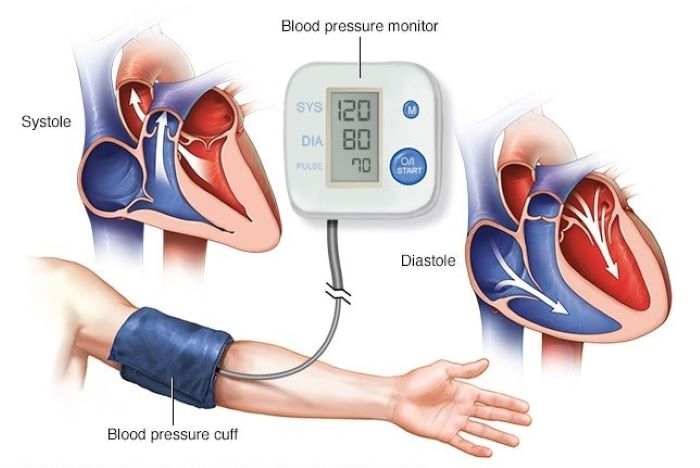
And here it is, as it were, an unkind heart. An unkind heart is a hypertrophied heart. It is shown schematically here. We see a thickened posterior wall of the left ventricle, the interventricular septum. We see a decrease in the lumen, that is, there is no enlargement of the chambers, and we can practically say for sure that this is a consequence of poorly treated or poorly corrected arterial hypertension, since, pay attention, everything is normal with the right ventricle. It is not hypertrophied, it is not dilated, that is, the entire blow falls on the left ventricle.
And here I want to connect atrial fibrillation with left ventricular hypertrophy. That’s what the dog is buried in. This is why we see atrial fibrillation so often in hypertensive patients. There are two “responses” of the myocardium to damage – atrophy or hypertrophy. Today we are more concerned with the latter. And how the myocardium will behave in damage depends on whether protein synthesis predominates or protein breakdown predominates. If protein synthesis is regulated by many different enzymes, then just the breakdown of proteins – a very interesting indicator – is mainly regulated by such an agent as atrogin-1. And we see that during hypertrophy, protein synthesis prevails over decay, and, conversely, during atrophy, protein synthesis is somehow subordinate to protein decay.
If protein synthesis is regulated by many different enzymes, then just the breakdown of proteins – a very interesting indicator – is mainly regulated by such an agent as atrogin-1. And we see that during hypertrophy, protein synthesis prevails over decay, and, conversely, during atrophy, protein synthesis is somehow subordinate to protein decay.
And mediators of hypertrophy are the same as mediators of fibrosis. Dear colleagues, we had a whole educational cycle about fibrosis not only of the heart, but also about the molecular mechanisms of fibrosis in general, and we see all the same actors – angiotensin II, aldosterone, norepinephrine and prorenin. It is very important to remember here that even if we have blocked, say, with the help of angiotensin receptor blockers or with the help of ACE inhibitors, angiotensin II, then the synthesized renin and prorenin will still lead to hypertrophy, in particular, of the left ventricle.
Let’s dive a little deeper into left ventricular hypertrophy and look at the molecular pathways of hypertrophy, and then back to the macro level. So there are two main ways. Combining together angiotensin II, increased endothelin and a slight mechanical stretch, when the chamber begins to dilate a little, leads to the fact that alpha-1 adrenergic receptors begin to become activated, this in turn leads to an increase in NAD oxidase and the kinase cascade is triggered. When the same proteins are synthesized, cardiomyocyte hypertrophy occurs and, in addition to hypertrophy, something that does not work, the very pump from the artoendoplasmic calcium ATP phase of the serk, which is responsible for pumping out calcium and, accordingly, for reducing calcium contracture, goes in parallel. And here it is a small chamber with thick walls, the so-called concentric hypertrophy. But, if the myocardium takes a different path – the path of serious stretching, that is, dilatation of the chamber, this leads to the fact that the main mechanisms begin to affect the mitochondria, and here the cell embarks on the path of apoptosis, when the release of cytochrome C is already going like an avalanche, it is shed from the mitochondria.
So there are two main ways. Combining together angiotensin II, increased endothelin and a slight mechanical stretch, when the chamber begins to dilate a little, leads to the fact that alpha-1 adrenergic receptors begin to become activated, this in turn leads to an increase in NAD oxidase and the kinase cascade is triggered. When the same proteins are synthesized, cardiomyocyte hypertrophy occurs and, in addition to hypertrophy, something that does not work, the very pump from the artoendoplasmic calcium ATP phase of the serk, which is responsible for pumping out calcium and, accordingly, for reducing calcium contracture, goes in parallel. And here it is a small chamber with thick walls, the so-called concentric hypertrophy. But, if the myocardium takes a different path – the path of serious stretching, that is, dilatation of the chamber, this leads to the fact that the main mechanisms begin to affect the mitochondria, and here the cell embarks on the path of apoptosis, when the release of cytochrome C is already going like an avalanche, it is shed from the mitochondria.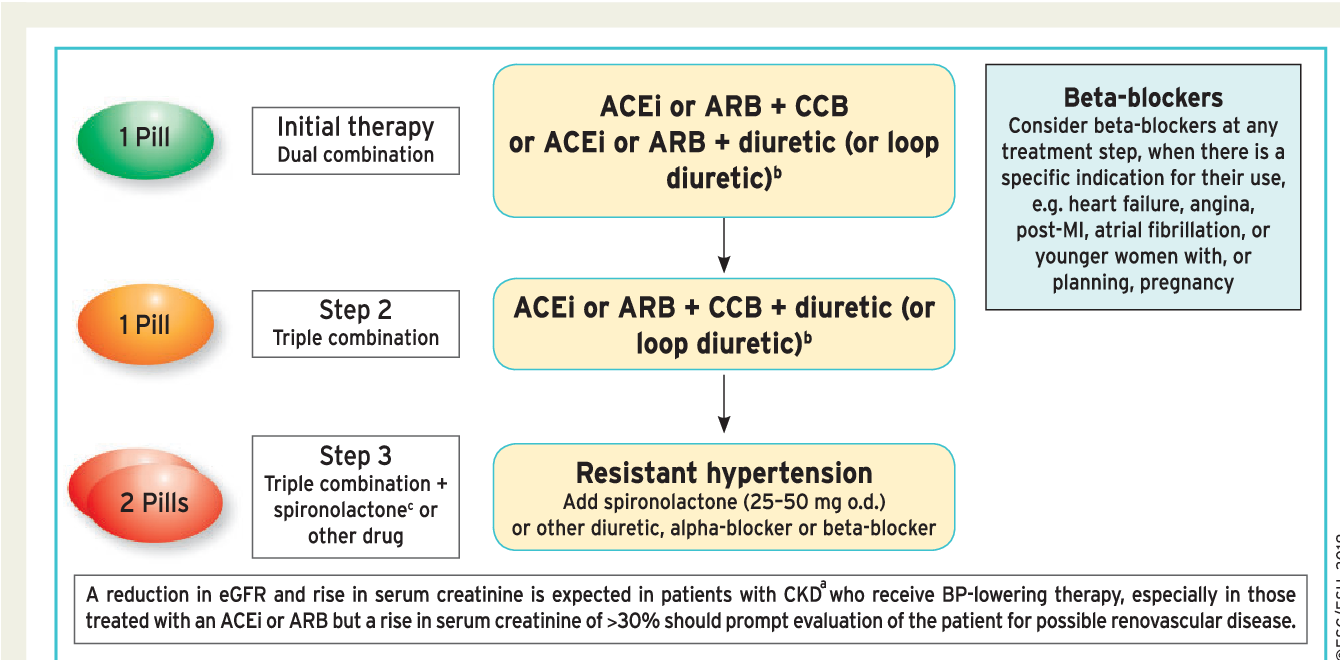 Here, the caspase cascade is activated, and apoptosis of cardiomyocytes occurs.
Here, the caspase cascade is activated, and apoptosis of cardiomyocytes occurs.
At the level of the macroorganism, we can say that now at the molecular level we have briefly considered the formation of concentric and eccentric hypertrophy of the left ventricle. Accordingly, concentric left ventricular hypertrophy is based on pressure overload, and eccentric left ventricular hypertrophy is based on volume overload, such as happens with various regurgitations, orortal, for example, regurgitation, and so on. Extracellular and intracellular signaling pathways are approximately the same.
And here is the continuum of cardiovascular diseases well known to us, at the beginning of which is hypertension in commonwealth with obesity, diabetes, and ends, perhaps, with chronic heart failure, which often leads the patient to our hospital bed.
Looking at electron microscopy of cardiomyocytes, we see that cardiomyocytes behave differently in different stages of left ventricular hypertrophy. Small myofibrils are already appearing, there are mitochondria, and you can see how gradually with an increase in hypertrophy, mitochondria increase. And this is what a patient with severe hypertrophy demonstrates. There are absolutely no well-read z-stripes, respectively, this myocardium will not be able to contract normally, we see a large amount of extracellular matrix, and we see a large number of myofibrils, and the architectonics of the contractile myocardium completely changes.
Small myofibrils are already appearing, there are mitochondria, and you can see how gradually with an increase in hypertrophy, mitochondria increase. And this is what a patient with severe hypertrophy demonstrates. There are absolutely no well-read z-stripes, respectively, this myocardium will not be able to contract normally, we see a large amount of extracellular matrix, and we see a large number of myofibrils, and the architectonics of the contractile myocardium completely changes.
Thus, the fate of a hypertrophied cardiomyocyte at the heart of arterial hypertension, and, as we said, one of the consequences of atrial fibrillation, is unenviable: either it takes the path of apoptosis in a samurai way, or the path of necrosis.
It is very important in what way the cardiomyocyte will take, to analyze the relationship between the extracellular matrix and the cardiomyocyte. The extracellular matrix is a terribly interesting system, it is constantly in motion, processes of either synthesis or, conversely, degradation of collagen are taking place there all the time, and all this is also controlled by the relationship of matrix metalloproteinases and their inhibitors.
It is interesting or even surprising, but true: it turns out that in left ventricular hypertrophy, the average size of a cardiomyocyte does not increase, but even decreases, but it is the specific gravity of the extracellular matrix that increases. This has been demonstrated in one very elegant work by our colleagues from the Almazov Institute.
Look, this is an atrial cardiomyocyte. And we see under the letter A – a histological examination in a patient with a permanent form of atrial fibrillation, the average, the letter B is a paroxysmal form of atrial fibrillation and C is a healthy myocardium. Please note that the average diameter of cardiomyocytes when it is a healthy myocardium is 15 microns. If a patient has atrial fibrillation, and he came to it through hypertrophy, then the average size of cardiomyocytes decreases, and the density of capillaries increases and the fibrosis fraction increases. Accordingly, the main message of my today’s speech is that fibrous changes must necessarily be in the composition of hypertrophy. Accordingly, the beneficial effects of ACE and ARA inhibitors that we see in reducing left ventricular hypertrophy and preventing atrial fibrillation are probably largely related to their effect on fibrosis, that is, to their antifibrotic properties.
Accordingly, the beneficial effects of ACE and ARA inhibitors that we see in reducing left ventricular hypertrophy and preventing atrial fibrillation are probably largely related to their effect on fibrosis, that is, to their antifibrotic properties.
Thus, inflammation and fibrosis are the substrate of atrial fibrillation. And analyzed the main mechanisms of development of atrial fibrillation and its relationship with atrial fibrosis.
First, structural remodeling is carried out with the participation of fibrotic changes. Together with electrical remodeling, a substrate for atrial fibrillation is provided. The degree of fibrosis and the persistence of atrial fibrillation are correlated. And even with ventricular rate control, rapid atrial activation stimulates the development of atrial fibrosis.
Where do these processes take place? First of all, they begin to occur in the atrium, and you see that the most profibrogenic factor, the so-called growth factor TGFβ, can be activated both with the help of angiotensin II – the left edge of this figure, and with the help of a large mechanical stretch, that is, the dilatation of the chamber itself will lead to the fact that the processes of fibrinogen and fibrogenesis are launched and it becomes very difficult to stop them.
The main signaling pathways that are involved in the development of atrial fibrosis are disclosed. In addition to what I said, the intimate relationship of angiotensin II and transforming growth factor, here we must also remember about connective tissue growth factor and platelet growth factor.
Thus, we can say that angiotensin II sharply reduces the activity of matrix metalloproteinases and the implementation of effects, namely TGFβ stimulation, is not all that angiotensin II does. These stimulation effects extend beyond the activation of collagen synthesis, for example, angiotensin II is involved in the transformation of fibroblasts into myofibroblasts, and they are extremely aggressive agents that begin to synthesize extracellular matrix proteins. And the production of connective tissue growth factor is also activated.
Accordingly, there is every reason to say that agents that block the renin-angiotensin-aldosterone system can also reduce fibrosis. This has been demonstrated in many experimental models. I want to say that this is demonstrated in clinical practice, for example, the work of Professor Tatarsky, who for a long time, and even now he is engaged in atrial fibrillation, he showed that not only antiarrhythmic drugs can reduce the incidence of atrial fibrillation, but also in his works it was lisinopril, and when taking lisinopril, both the frequency of paroxysmal atrial fibrillation, and their tolerability, and their duration decreased.
I want to say that this is demonstrated in clinical practice, for example, the work of Professor Tatarsky, who for a long time, and even now he is engaged in atrial fibrillation, he showed that not only antiarrhythmic drugs can reduce the incidence of atrial fibrillation, but also in his works it was lisinopril, and when taking lisinopril, both the frequency of paroxysmal atrial fibrillation, and their tolerability, and their duration decreased.
We also analyzed some of the data in this issue, in particular, such a study was made with the name “Conductor”. We saw that against the background of adequate antihypertensive therapy, left ventricular hypertrophy decreased and diastolic heart failure increased or improved, in particular, against the background of diroton and co-diroton also showed the same results. Therefore, we can also say, with a certain degree of assumption, that this may be due to the influence on antifibrotic processes of these agents. Both these processes and these effects are summarized on this slide. We see that ARA and angiotensin-converting enzyme inhibitors can reduce left ventricular hypertrophy and, consequently, wall stiffness, optimize diastolic function, reduce left atrial pressure – all this will lead to inhibition of atrial remodeling and fibrosis and, accordingly, to a decrease in the risk of developing paroxysms of fibrillation atria.
We see that ARA and angiotensin-converting enzyme inhibitors can reduce left ventricular hypertrophy and, consequently, wall stiffness, optimize diastolic function, reduce left atrial pressure – all this will lead to inhibition of atrial remodeling and fibrosis and, accordingly, to a decrease in the risk of developing paroxysms of fibrillation atria.
And, in fact, what have we come to? This is my final slide, Management of Hypertension and Atrial Fibrillation. After all, this is, first of all, blood pressure control, we have many assistants, this is a lifestyle change, and a decrease in salt intake, an agent that will affect the renin-angiotensino-aldosterone system. Secondly, we know a little less about this, but still, it will probably develop very rapidly – this is the prevention or treatment, one can already say, of fibrosis. And finally, reducing oxidative stress. Thank you for your attention.
Atrial fibrillation – timely diagnosis is important to save lives
8 800 555 00 80
Free Hotline
Career
Sitemap
With the help of modern medical equipment for home use, it is possible to detect the development of cardiovascular diseases in a timely manner and try to prevent the serious consequences that they can have on health.
The first step to preventing a heart attack or stroke is to measure your blood pressure regularly. Doctors recommend measuring blood pressure twice a day, morning and evening. All that is needed for this is to arm yourself with a high-tech and accurate tonometer.
Devices for measuring pressure of the famous Japanese brand OMRON have been guarding the health of people around the world for more than a decade. In Russia, OMRON blood pressure monitors regularly become sales leaders. The high quality of products, their availability have become the hallmark of the brand.
By pressing one key on the OMRON tonometer, within a few seconds, the user receives accurate data on pressure and pulse rate, and special sensors will report possible violations in the heart, such as atrial fibrillation.
Arrhythmia often increases the risk of thrombosis and ischemic stroke. With a constant form of atrial fibrillation, a sharp progression of chronic circulatory failure can be observed.
Regular measurement of blood pressure with automatic sphygmomanometers will detect heart rhythm disturbances in the early stages. Thanks to OMRON technologies, users can monitor their heart status on a daily basis without effort and loss of time. In cases where the atrial fibrillation sensor signals with each measurement, it is important to immediately consult a doctor to establish a diagnosis and, as a result, receive timely therapy.
It is important that primary prevention is the active treatment of diseases that are potentially dangerous in terms of the development of atrial fibrillation (arterial hypertension and heart failure), which are just diagnosed with a regular increase in blood pressure. If you keep this indicator under control, you can avoid serious health consequences.
Most OMRON automatic blood pressure monitors are equipped with an atrial fibrillation sensor, and when measuring pressure, you can ensure that the disease does not have a chance of success.
Cold period. The importance of monitoring a child’s temperature. Thermometers CS Medica KIDS
All articles
CS Medica devices to protect the health of babies
Useful to read
How to teach a child to breathe with a nebulizer
How I wish the children didn’t get sick! To
sonorous children’s laughter and smiles always pleased parents! But children and colds are…
How many times do I need to measure blood pressure and how to calculate the average value?
How often blood pressure is measured
during the day, how to calculate the average value …
Top 5 gifts for the New Year
Attention and care for loved ones is the most important thing
and natural human desire. Give Love, Health and Joy to your loved ones in the New Year.
Gift…
OMRON Reliable Performance, Safety and Variety of Options for All User Groups
The most important words for those who acquire
medical te…
How to choose a nebulizer for a child?
Nebulizer inhalation used
for the treatment of diseases of the respiratory system in children. Unlike syrups…
Why is the heart attack “getting younger” in Russia?
There are more and more young people under 40 in Russia
experience myocardial infarction. Why it happens and how to prevent…
Solutions for inhalation – what products are used in nebulizers?
For treatment with a nebulizer
effective, special …
How to choose an electric massager for electrical muscle stimulation
What is a muscle stimulator?
Myostimulator of nerve endings – electric massager
– device for .
